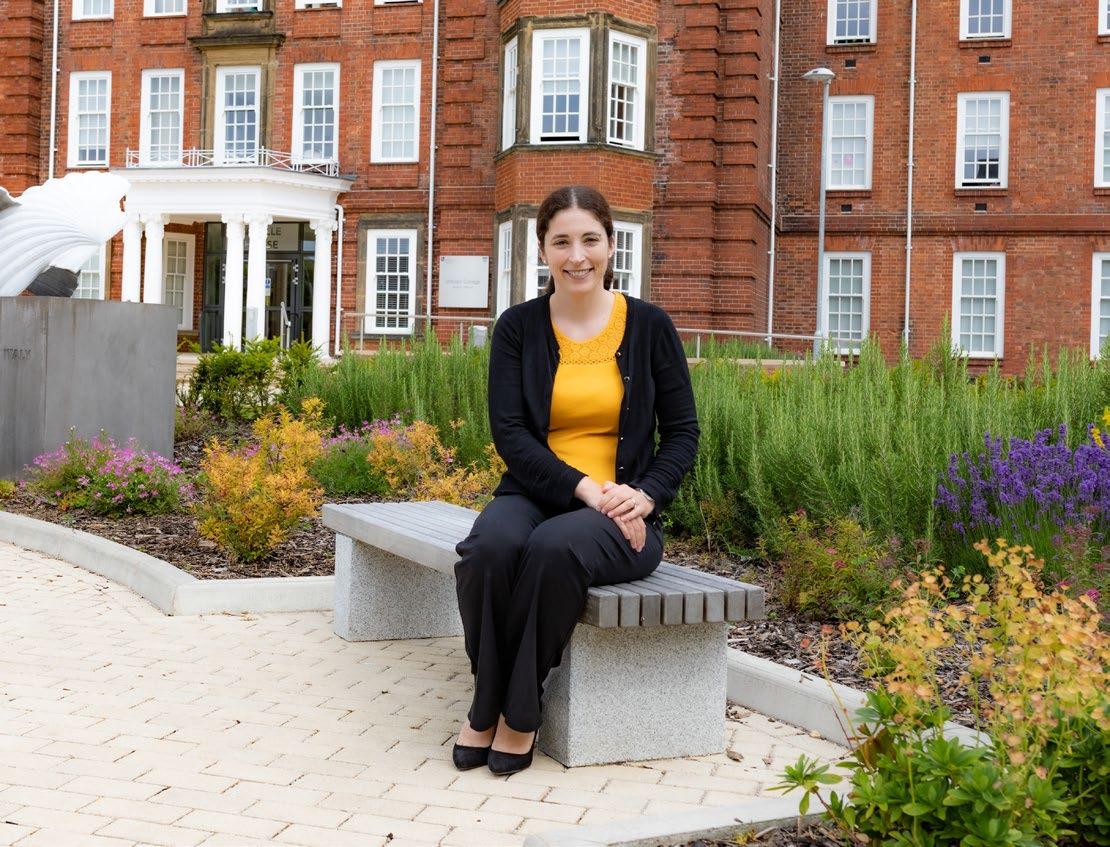
5 minute read
Exploring ‘honour’ rationales behind forced marriages within British South Asian communities - Ayurshi Dutt
Exploring ‘honour’ rationales behind forced marriages within British South Asian communities
Ayurshi Dutt
Advertisement
“Marriages shall be entered into only with the free and full consent of the intending spouses” (Universal Declaration of Human Rights, Article 16 (2)). A threat or an actual occurrence of forced marriage constitutes lack of meaningful and informed consent (or no consent in the case of people with learning disabilities) where one or both spouses experience limited or no degree of choice in terms of whether to marry, whom to marry, when to marry, or even express their unwillingness to marry without negative consequences. This research explores the processbased nature of forced marriage, i.e. the stages before, during and after a forced marriage, by illuminating the actuality of family honour in relation to pressures, coercion, decision-making and ‘consent’ related to forced marriage.
Honour is a social construct which directly affects respectability, reputation and social standing of a community group, and is managed by ‘male control over women’s social and sexual conduct’ (Welchman and Hossain, 2005; Gill et al., 2012). Deference, fidelity, chastity and modest social conduct govern the intimate and social lives of women in patriarchal communities, and sexual promiscuity, extra-marital affairs, romantic involvement with men disapproved of by family, rejecting familyapproved matches and pre-marital sex amount to non-conformity (Meeto and Mirza, 2010) and bring shame, humiliation and embarrassment to the entire family, causing an urge to rectify sullied honour (Reddy, 2014).
My research is with victim-survivors of forced marriage from the British South Asian community (Pakistani, Bangladeshi and Indians) to facilitate an understanding of how honour influences coercion and consent. It also traces how women’s agency develops, and how they negotiate, challenge or capitulate to a forced marriage. Apart from biographical interviews with victim-survivors, I will also conduct semi-structured interviews with third sector organizations, practitioners and frontline workers in the area of domestic abuse, honour-based abuse, child protection, migrant women support and advocacy, the broader criminal justice system (honour-based abuse and domestic abuse focused police staff) and airport immigration staff.
In the majority of Western settings including the UK, forced marriage and other forms of honour-based violence like honour killings and female genital mutilation, are conceptualized as abuses inherent to minority cultures only. There is a strong Western view which others black and minority ethnic communities as ‘feudal, backward and uncivilized’ and themselves don a morally superior cap (Razack, 2004). This cultural and racial stereotyping of forced marriage, and the communities in which it occurs the most, not only increases stigmatization and strengthens islamophobia and racism, but also dismisses similar occurrences, such as shotgun marriages, in majority white cultures (Chantler and Gangoli, 2012). Honour, too, is not a character of minority cultures and forms a key part of patriarchal status quo worldwide (Gangoli et al., 2011).
To address the underlying issues of race, gender and violence, I use a threepronged theoretical framework to address my research aims and objectives. Firstly, I employ a postcolonial feminist lens (a strand of feminist understanding which debunks Western myths and stereotypes associated with BAME communities and) to acknowledge their own structural constraints and dissuade their conceptualization as ‘poor women in need of saving from their own deviant cultures’ (Anitha and Gill, 2009; Das, 2010). Secondly, I use intersectionality as a tool to understand how multiple social categories of power, inequality and oppression (e.g. religion, race, ethnicity, employment status, education levels, age, immigration status). These intersecting inequalities provide a reference point to document the differences among survivors’ experiences of forced marriage, and to contextualize what made them consent and stay in a forced marriage (Crenshaw, 1989; Davis, 2008). Lastly, a nested ecological framework to violence against women is used to synthesize the multiple factors at play at different levels of the social ecology (ontogenic (personal history: witnessing abuse as a child), microsystem (situational: community standing/reputation), exosystem (racism, isolation) and macrosystem (hegemonic masculinity, patriarchal norms, honour codes) (Heise, 1998). The purpose of using the heuristic ecological model is to document causal factors and their interlinking with each other when honour codes are operationalized while accepting, rejecting and escaping a forced marriage.
In summary, my research will explicate the processes of honour, family and community involvement in different types of pressure exerted on victimsurvivors to gain consent to marry. This research addresses a concern related to participation in marital decision-making by exploring the degree of choice victimsurvivors have in environments of family stronghold, and how they verbalize it amidst larger family consensus. The findings from this research can be used by service providers and domestic abuse practitioners to better understand and respond to cases of forced marriage.
References
Anitha, S. and Gill, A. (2009). Coercion, Consent and the Forced Marriage Debate in the UK. Feminist Legal Studies, 17(2), pp.165-184.
Chantler, K., & Gangoli, G. (2012). Violence Against Women in Minoritised Communities: Cultural Norm or Cultural Anomaly? In Thiara R., Condon S., & Schröttle M. (Eds.), Violence against Women and Ethnicity: Commonalities and Differences across Europe (pp. 353-366). Opladen; Berlin; Farmington Hills: Verlag Barbara Budrich. doi:10.2307/j.ctvbkjw5t.26
Crenshaw, K. (1989). Demarginalizing the Intersection of Race and Sex: A Black Feminist Critique of Antidiscrimination Doctrine, Feminist Theory and Antiracist Politics. The University of Chicago Legal Forum, 140, 139-167.
Das, V.2010. “Listening to Voices: An Interview With Veena Das by Kim Turcot DiFruscia.” Altérités7 (1): 136–145.
Davis, K. (2008) `Intersectionality as Buzzword: A Sociology of Science Perspective on What Makes a Feminist Theory Successful’. Feminist Theory, Vol. 9 (1): 67-85.
Gangoli, G., Chantler, K., Hester, M., & Singleton, A. (2011). Understanding forced marriage: Definitions and realities. In A. K. Gill & S. Anitha (Eds.), Forced marriage: Introducing a social justice and human rights perspective (pp. 25–45). London: Zed Books.
Gill, A.K., Begikhani, N. and Hague, G. (2012) “Honour”-based violence in Kurdish communities’, Women’s Studies International Forum, 35, 75– 85.
Heise, L. (1998). Violence Against Women. Violence Against Women, 4(3), 262-290. https://doi.org/10.1177/1077801298004003002
Meeto, V., & Mirza, H. S. (2010). There is nothing ‘honourable’ about honour killings – Gender, violence and the limits of multiculturalism. In M. M. Idriss & T. Abbas (Eds.), Honour, violence, women and Islam (pp. 42–66). London: Routledge-Cavendish.
Razack, S. (2004). Imperilled Muslim Women, Dangerous Muslim Men and Civilised Europeans: Legal and Social Responses to Forced Marriages. Feminist Legal Studies, 12(2), 129-174. https://doi.org/10.1023/ b:fest.0000043305.66172.92
Reddy, R. (2014). Domestic violence or cultural tradition? Approaches to ‘honour killing’ as species and subspecies in English legal practice. In A. K. Gill, C. Strange & K. Roberts (Eds.), Honour killing and violence: Theory, policy and practice (pp. 27–45). Hampshire: Palgrave MacMillan.
Welchman, L. and Hossain, S. (2005). ‘Honour’: Crimes, Paradigms and Violence Against Women. London: Zed Books, pp.1-21.
To gain more knowledge of how this research will be conducted, she can be personally contacted at ayurshi.dutt@durham.ac.uk.










